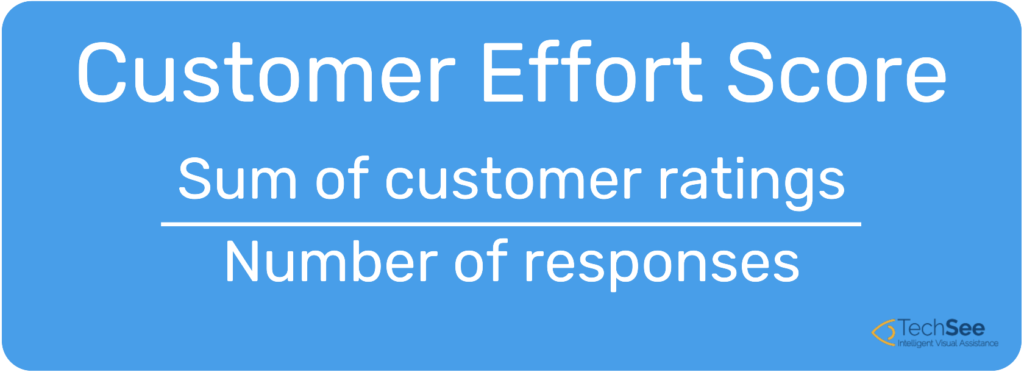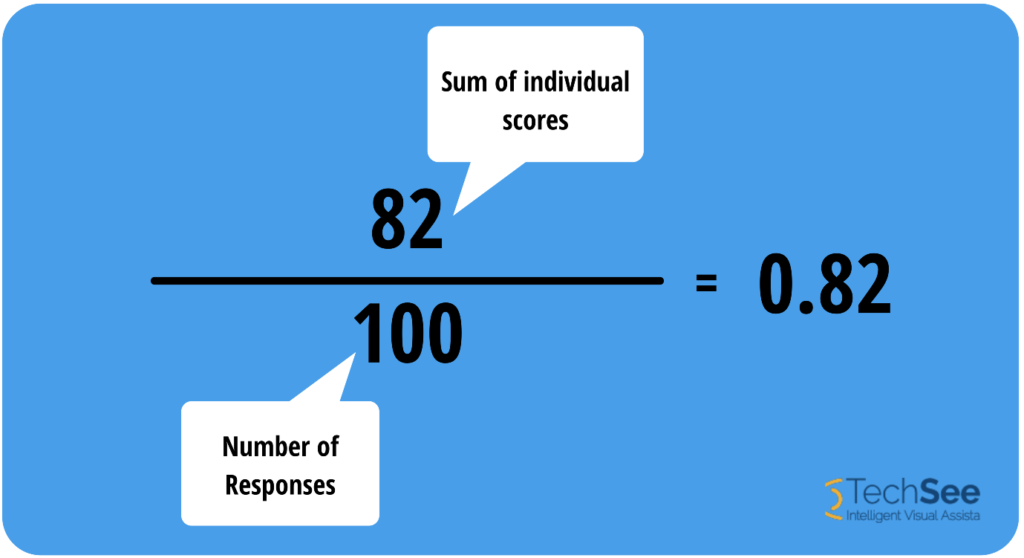Contents
What should take effort?
Building a deck – yes.
Saving for a down payment – yes.
Earning a Master’s degree – yes.
Getting your problems solved by customer service – no.
The level of effort customers must expend to interact with your organization can significantly impact the success of your business. It is critical to understand the importance of measuring customer effort, learn how to measure customers’ feelings about the effort involved with interacting with your business, and finally, take key steps to improve your score.
What is customer effort score (CES)?
Customer Effort Score (CES) is a customer experience metric that measures how much effort a customer must exert during an interaction with a company. It is most often measured by asking a customer a single question: rate how much effort was required to get a specific issue or request resolved.
The Importance of CES
According to Gartner, organizations should strive to deliver experiences that are low effort because effort is the driver with the strongest tie to customer loyalty. Research has shown that 96% of customers who experience a high-effort interaction become more disloyal compared to just 9% who have a low-effort experience.
High-effort interactions include needing to repeat information, interacting a second time, experiencing ‘generic’ service, a lack of self-service, or needing to exert additional mental effort to have an issue resolved. By tracking CES, businesses can make the necessary improvements to enhance the customer experience.
How to calculate CES
To calculate customer effort score, organizations divide the sum of all individual customer effort scores by the number of customers who responded. The more people who “Strongly Agree” that the company made the experience easy for them, the higher the CES.
Customer Effort Score ranges from 0-100. For example, if 82 customers out of 100 were satisfied with the interaction, your CES would be 0.82.
Benefits of a High Customer Effort Score
There are many advantages for businesses which achieve a high customer effort score. Here are some of the common benefits.
More positive word-of-mouth
Low effort means a higher likelihood of a customer referral, with Gartner reporting that 96% of customers who experience a high-effort interaction say they would speak negatively about the company to others. Research shows that top-performing low-effort companies tend to have an NPS that is 65 points higher than top-performing high-effort businesses. This is a further proof that a good customer effort score is linked to customer loyalty.
Higher repurchase rates
A high customer effort score is a strong predictor of future buying behavior. According to a HBR study, 94% of customers reporting low effort said they would repurchase, and 88% said they would even increase their spending. Gartner reports identical findings, highlighting that 94% of customers with low-effort interactions intend to repurchase compared with 4% of those experiencing high effort.
Lower overall support costs
When repeat calls decline and escalations become unnecessary, cost to serve is greatly reduced. In fact, Gartner reports that a low-effort interaction costs 37% less than a high-effort interaction.
Better employee retention
With the high costs of employee turnover – as much as 2.5 times an employee’s salary depending on the role – it makes sense to take steps to reduce attrition. When agents are empowered to deliver a better customer experience, they feel better about their jobs, and their intent to remain increases by up to 17%.
CES vs NPS vs CSAT
There are three main customer experience metrics: Customer Effort Score (CES), Net Promoter Score (NPS), and Customer Satisfaction (CSAT).
Customer Effort Score
Deploying a CES survey question is quick and easy and is the best metric for measuring customer loyalty. However, the metric may only provide a short-sighted view of the customer’s feelings following a specific touchpoint. For example, the customer may feel generally positive toward your company but may have had a negative experience with this particular interaction. A good practice is to use CES along with CSAT and NPS.
Net Promoter Score
NPS is an easy-to-calculate management tool that is widely used to measure customers’ overall perception of a brand and the likelihood of them recommending the product or service to a friend. A good practice is to use NPS and CES to learn more about any gaps in a single touchpoint, while still getting a feel for the customer experience overall.
Customer Satisfaction
CSAT is a broader metric that takes the temperature of a customer’s sentiment toward your company at a given point in time, but it is limited when measuring a customer’s ongoing relationship with a company or loyalty.
| Metric | Goal | Benefit | Drawback |
|---|---|---|---|
| CES | Measuring customer loyalty | Quick and easy way to measure, and most accurate metric | Short-sighted view of feeling at a specific touchpoint |
| NPS | Measuring overall perception and likelihood of referral | Long term projection | Lacks insights for a single touchpoint |
| CSAT | Measuring customer satisfaction with a brand | Precise feedback at any given point in time | Cannot indicate loyalty or likelihood of ongoing relationship |
These three customer experience metrics complement each other and can be used together to give an organization the clearest picture of where they stand with their customers.
History of CES
The concept of CES came about in 2010 with the publication of an HBR article that highlighted research from CEB that shocked the customer service industry. CEB’s analysis determined that the way to increase customer loyalty is not through delighting customers, but rather by removing any barriers and making it easier for them to do what they need to do.
Since then, reducing customer efforts has been a key performance indicator for many businesses and organizations. Reducing the amount of effort a customer has to exert to get their problem solved not only increases customer loyalty, but the KPI has been found to increase repurchase rates, reduce customer care costs, and lower attrition as well.
Best Ways to Improve Your CES
No one likes a hassle. Customers want smooth transactions and will quickly go elsewhere if your business makes it difficult for them to get their problems solved. Improve your company’s CES by implementing these tools and technologies that streamline the customer experience, eliminating any processes that waste a customer’s time or create duplicate work.
Invite engagement
Make it easy for customers to reach you. Offer multiple engagement channels, including phone, email, chat, social media, and even in-person support, if applicable. The more convenient it is for customers to reach out, the less effort it will be to get their problem solved.
Minimize wait times with technology
Customer frustration mounts with every minute they are on hold waiting to talk to a live agent. If your call center suffers from long wait times, hire more staff or use a callback system to alleviate this critical pain point. Interactive voice response (IVR) is another widely used technology that enables a customer to interact with the company’s computer system through the speech recognition and their phone keypad. IVR instructs customers on how to proceed, directs queries to the proper departments, and reduces hold times, and is complemented with visual assistance technology to provide a comprehensive customer service solution.
Provide self-service options
Self-service allows customers to help themselves at the times most convenient to them. Self-service channels can include an automated chat functionality for quick issue resolution or a regularly updated knowledge base with FAQs, reducing call volumes and increasing efficiencies. Providing self-service options makes it easier for the customer to get their question answered and reduce customer effort.
Implement warm transfers
A warm transfer is when one agent answers a call, collects the necessary details from the customer, and then passes on the relevant information to the next agent who will help the customer. This eliminates the need for the customer to repeat themselves, lowers effort, and allows the follow-up conversation to be seamless and productive.
Deliver Visual Assistance
Take the guesswork out of customer service by enabling agents to view a customer’s issue via their smartphone camera or by sharing their smartphone screen. This technology allows the agent to easily diagnose the problem and visually guide the customer towards a solution, eliminating the long lists of questions and answers that agents traditionally used to get to the root of a problem.








